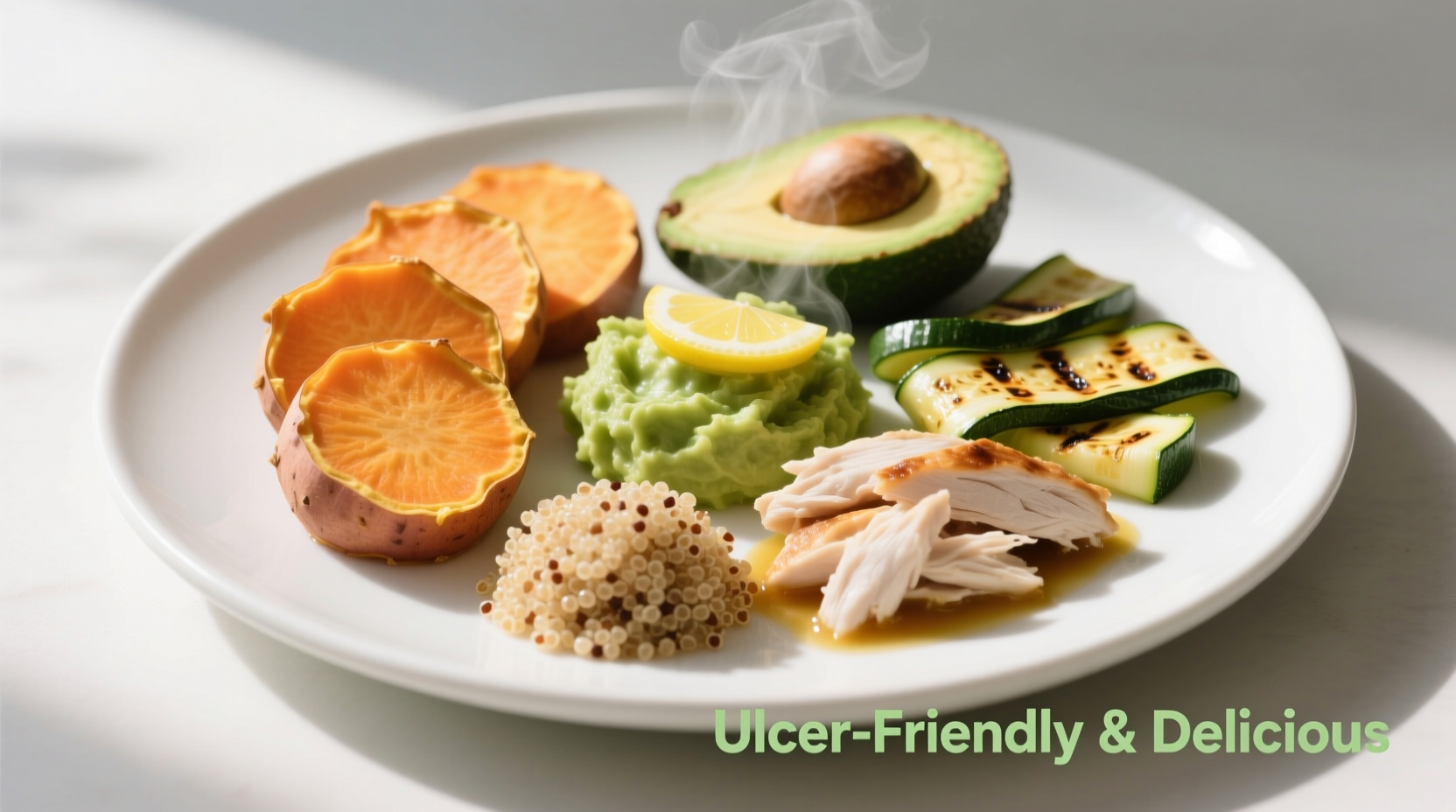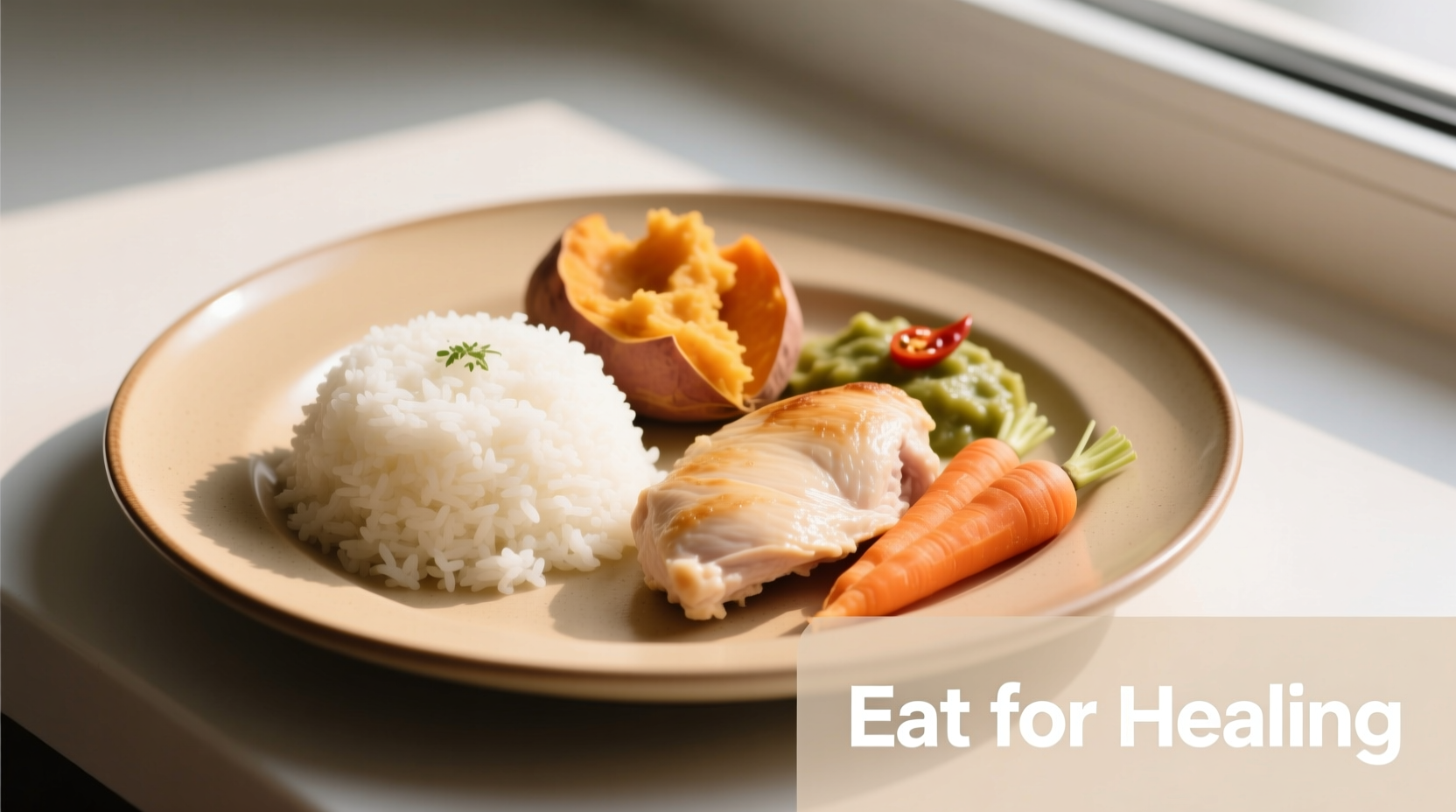If you're managing a stomach ulcer, focus on healing foods like broccoli, cauliflower, and other cruciferous vegetables rich in sulforaphane; probiotic-rich yogurt; zinc-packed pumpkin seeds; and soothing options like oatmeal and bananas. Avoid irritants including spicy foods, citrus, caffeine, and alcohol. These dietary choices support healing while reducing irritation to your stomach lining, but always consult your doctor for personalized treatment as diet alone doesn't cure ulcers caused by H. pylori bacteria or NSAIDs.
Your Practical Guide to Eating With Ulcers
When you're dealing with ulcer pain, knowing exactly what to eat can provide immediate relief and support healing. Ulcers aren't caused by diet alone—most stem from H. pylori bacteria or NSAID use—but strategic food choices significantly impact your comfort and recovery time. This guide delivers evidence-based dietary strategies used by gastroenterologists to help patients manage symptoms while undergoing medical treatment.
Why Diet Matters in Ulcer Management
While modern medicine has moved beyond the outdated belief that "stress and spicy food cause ulcers," research confirms certain foods can either soothe or aggravate your stomach lining. The National Institute of Diabetes and Digestive and Kidney Diseases (NIDDK) emphasizes that dietary adjustments serve as complementary therapy alongside medical treatment, helping reduce pain during healing.
Ulcers create open sores in your stomach lining or small intestine, making them vulnerable to irritation. Your food choices directly impact:
- Acid production levels
- Inflammation reduction
- H. pylori bacterial growth
- Tissue healing speed
Foods That Support Ulcer Healing
Clinical studies reveal specific foods contain compounds that actively support ulcer recovery. Incorporate these evidence-backed options:
Cruciferous Vegetables: Nature's Healing Powerhouse
Broccoli, cauliflower, and Brussels sprouts contain sulforaphane, which research published in Cancer Prevention Research shows inhibits H. pylori growth. Just 1 cup of chopped broccoli delivers 130% of your daily vitamin C needs—critical for tissue repair.
Probiotic-Rich Foods: Restore Gut Balance
Yogurt with live cultures helps replenish beneficial bacteria depleted by antibiotics used in ulcer treatment. A 2020 meta-analysis in Nutrients confirmed probiotics reduce H. pylori levels and improve treatment success rates by 15% when combined with standard therapy.

Zinc-Enriched Options: Accelerate Tissue Repair
Pumpkin seeds, cashews, and chickpeas provide zinc—a mineral essential for wound healing. The National Institute of Diabetes and Digestive and Kidney Diseases notes zinc deficiency slows ulcer healing, making these foods particularly valuable during recovery.
| Recommended Foods | Key Benefits | How to Include |
|---|---|---|
| Oatmeal | Forms protective barrier, reduces acid contact | Choose plain, cook with almond milk |
| Bananas | Neutralizes stomach acid, coats irritated tissue | Eat ripe bananas, avoid green |
| Honey | Natural antibacterial properties | 1 tsp in warm water or tea |
| Leafy greens | High in vitamin K for healing | Steam or sauté, avoid raw |
Foods to Avoid With Ulcers: The Irritation Triggers
Certain foods increase stomach acid production or directly irritate ulcer sites. The American College of Gastroenterology specifically warns against these during active ulcer phases:
- Spicy foods: Capsaicin in peppers stimulates acid production
- Citrus fruits: High acidity aggravates open sores
- Caffeine: Increases gastric acid secretion by 60-90%
- Alcohol: Damages protective stomach lining
- Fried foods: Delay stomach emptying, increasing acid exposure
Practical Eating Strategies for Ulcer Relief
How you eat matters as much as what you eat when managing ulcers:
Meal Timing Protocol
Instead of three large meals, eat five to six small meals throughout the day. This approach, recommended by Mayo Clinic gastroenterologists, prevents stomach acid buildup between meals. Start with these timing guidelines:
- First meal within 1 hour of waking
- Subsequent meals every 2-3 hours
- Last meal at least 3 hours before bedtime
Sample Healing Meal Plan
This evidence-based plan incorporates ulcer-friendly nutrients while avoiding irritants:
- Breakfast: Oatmeal with banana slices and almond milk
- Mid-morning: Probiotic yogurt with honey
- Lunch: Steamed salmon with mashed sweet potato and cooked carrots
- Afternoon: Pumpkin seed crackers with avocado
- Dinner: Baked chicken with roasted zucchini and quinoa
- Evening: Chamomile tea with a few almonds
Understanding Treatment Timelines
Ulcer healing follows predictable phases when combining medical treatment with proper diet. This timeline shows what to expect:
- Days 1-3: Pain reduction begins with acid-suppressing medication (PPIs)
- Days 4-7: Significant symptom improvement with consistent dietary changes
- Weeks 2-4: Visible healing of ulcer site with continued treatment
- Week 6: Most ulcers fully healed with proper medical care and diet
Remember that H. pylori infections require specific antibiotic treatment—diet alone won't eradicate the bacteria. The Centers for Disease Control and Prevention reports that untreated H. pylori infections lead to recurrent ulcers in 80% of cases.
When Diet Isn't Enough: Critical Medical Considerations
Dietary changes support but don't replace medical treatment for ulcers. Recognize these red flags requiring immediate medical attention:
- Sudden sharp abdominal pain
- Vomiting blood or coffee-ground-like material
- Black, tarry stools
- Dizziness or fainting
These symptoms may indicate complications like perforation or bleeding that require emergency care. Always follow your doctor's treatment plan, which typically includes:
- Proton pump inhibitors (PPIs) to reduce acid
- Antibiotics for H. pylori infections
- Antacids for symptom relief
- Follow-up endoscopy to confirm healing
Long-Term Prevention Strategies
After your ulcer heals, maintain stomach health with these sustainable habits:
- Limit NSAID use or take with food
- Manage stress through mindfulness practices
- Maintain consistent meal timing
- Incorporate healing foods regularly
- Get tested for H. pylori if symptoms recur
The American Gastroenterological Association emphasizes that combining medical treatment with strategic dietary choices yields the best outcomes for ulcer patients. By understanding which foods support healing and which trigger irritation, you take an active role in your recovery process.











 浙公网安备
33010002000092号
浙公网安备
33010002000092号 浙B2-20120091-4
浙B2-20120091-4